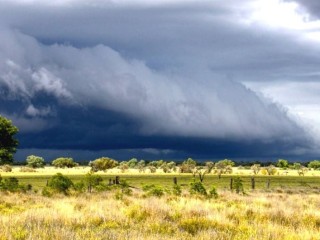 The El Niño/Southern Oscillation (ENSO) phenomenon remains recognised as the core driver of climate variability in eastern Australia, according to University of Southern Qld climate researcher, Professor Roger Stone.
The El Niño/Southern Oscillation (ENSO) phenomenon remains recognised as the core driver of climate variability in eastern Australia, according to University of Southern Qld climate researcher, Professor Roger Stone.
Prof Stone told farmers and advisors at a recent GRDC gathering at Goondiwindi on the NSW/Qld border that ENSO remains king when it comes to interpreting weather patterns in the northern grain-growing region. The region roughly encompasses the agricultural zone from Dubbo in Central NSW to the Central Highlands in Queensland.
Prof Stone said climate forecasts available for the northern region, such as those based on or similar to the ‘SOI-phase system’, had been proven highly valuable over the past ten years.
“Although there are many climate patterns and systems that exist at widely varying time scales, the ENSO phenomenon remains recognised as the core driver of climate variability in eastern Australia,” Prof Stone said.
“The term ‘ENSO’ also encompasses the now infamous La Niña pattern.
“Other climate forecast systems, especially those that also utilise Indian Ocean inputs, tend to provide less ‘skill’ or value for a region such as the northern cropping region but otherwise provide high skill in regions such as WA,” he said.
He said new developments in general circulation model (GCM) forecasts (whether they are produced in Australia or in other countries) suggested enhanced and useful forecast skill for seasonal and longer time periods for the northern region in the future.
 “With further development and testing, GCM forecast systems may provide increased lead time and greater forecast accuracy than currently applied statistically-produced systems,” he said.
“With further development and testing, GCM forecast systems may provide increased lead time and greater forecast accuracy than currently applied statistically-produced systems,” he said.
Operational El Niño–Southern Oscillation (ENSO)-based statistical forecasting of seasonal rainfall and temperature has been undertaken in Australia for almost 20 years.
The capability of the two major governmental programs providing these forecasts (Australian Bureau of Meteorology and Queensland Government) have been verified either directly or indirectly through converting point-based forecasts to grid-based outputs, Prof Stone said.
“The Queensland Government’s Southern Oscillation Index (SOI) phase-based forecasts have been verified by BOM using the Bureau’s monthly rainfall analyses.
“Over the past ten years, both the Bureau’s forecasts and the SOI-phase forecasts have performed comparably when measured by the ‘per cent consistent/correct’ statistic, although with successes and failures in different parts of Australia.”
He said importantly, this study showed that the Queensland SOI-phase forecasts performed well in relation to forecasting for eastern Australia.



HAVE YOUR SAY